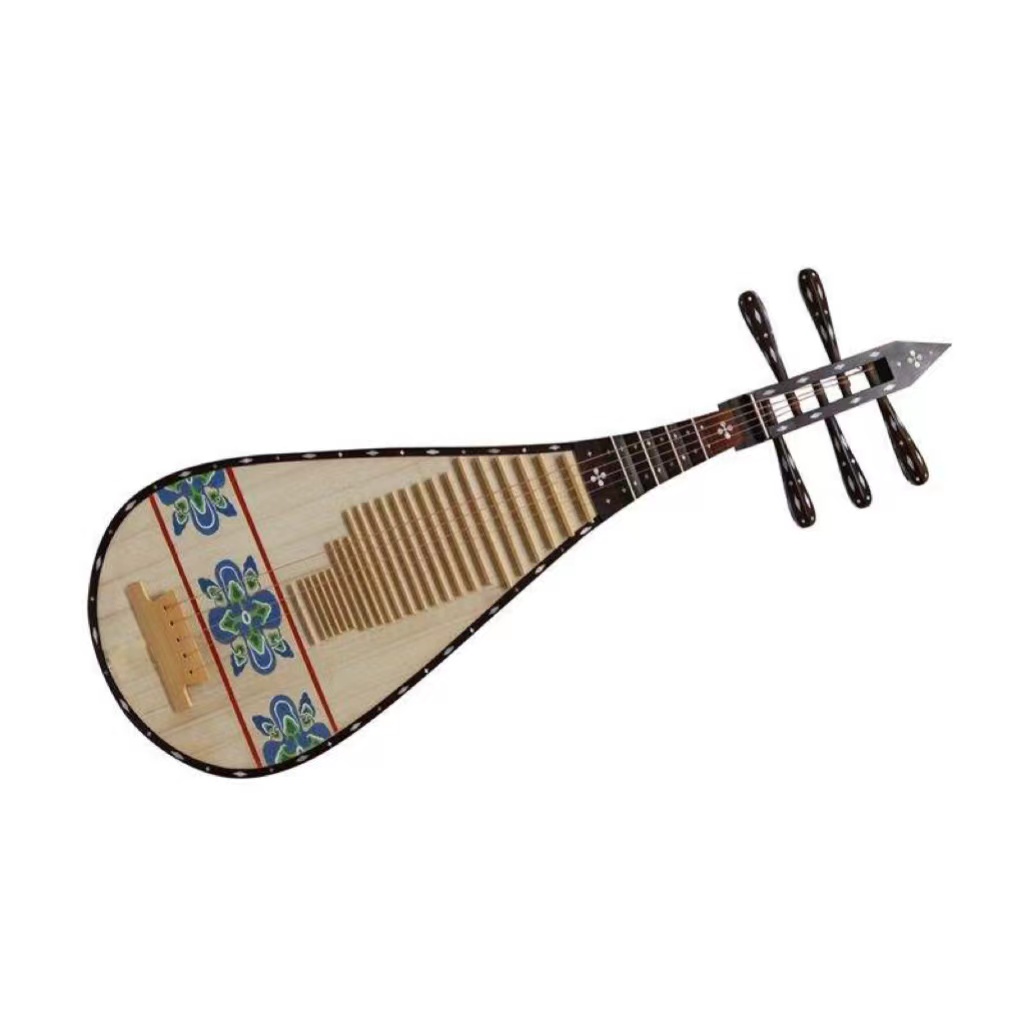Five-string Pipa overview
 The five-stringed pipa (pinyin wǔ xián pí pá) is an ancient Chinese plucked stringed musical instrument. Referred to as "five strings". The five-stringed pipa has a long history and unique shape. It was popular in the vast Central Plains of my country during the Tang Dynasty, and spread to Japan, becoming a historical witness of Sino-Japanese cultural exchanges.
The five-stringed pipa (pinyin wǔ xián pí pá) is an ancient Chinese plucked stringed musical instrument. Referred to as "five strings". The five-stringed pipa has a long history and unique shape. It was popular in the vast Central Plains of my country during the Tang Dynasty, and spread to Japan, becoming a historical witness of Sino-Japanese cultural exchanges.The five-stringed pipa in the flat plum blossom-shaped speaker in Cave 220 of the Mogao Grottoes is unique. The speaker resembles a petal, the neck is thin and long, and the head is bent backwards. The flat and round five strings of the speaker are like Ruan Xian, but the back is made of whole wood, and the center of the panel is painted with a rectangular pattern.
The five-stringed pipa is a plucked stringed musical instrument of the northern ethnic minorities in ancient my country. After this musical instrument was introduced into the Central Plains from the Western Regions, it became popular in the Northern Dynasty in the fifth and sixth centuries AD. During the Tang and Song Dynasties, there were frequent cultural exchanges between China and Japan. In the process of comprehensively learning Chinese culture, Japan brought a large number of Tang and Song art treasures back to Japan. Due to the frequent wars in China and the change of dynasties, some cultural relics that had been lost in China are treasured. Japan was able to survive and eventually became an orphan. From these precious cultural relics, we can reflect on the historical features of the peak period of Chinese culture, and they have become the common cultural heritage of all mankind.
- Chinese name:Five-string Pipa
- country of origin:China
- type:stringed instrument
- Pinyin:wǔ xián pí pá
- popular area:Tang Dynasty
overview of other similar instruments
- sanyanxiao overview
- Daguangxian overview
- Leiqin overview
- hahao overview
- yandundagu overview
- Han Xiaozheng overview
- Fang Xiang overview
- guanzi overview
- zhuqin (Dao Qin) overview
- zhuiqin overview
- bangzi overview
- three-stringed piano overview
- Gehu overview
- xiao overview
- xiaokonghou overview
- Konghou overview
- Sheng overview
- suona overview
- hulusi overview
- gushao overview
 渝公网安备 50010702504639号
渝公网安备 50010702504639号